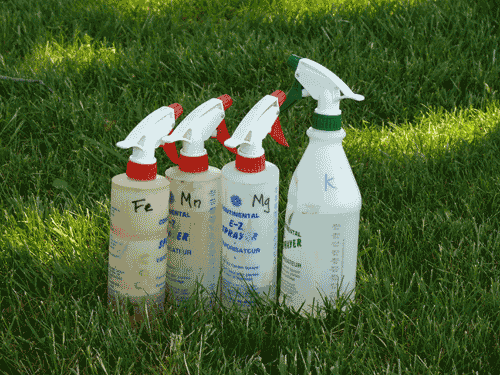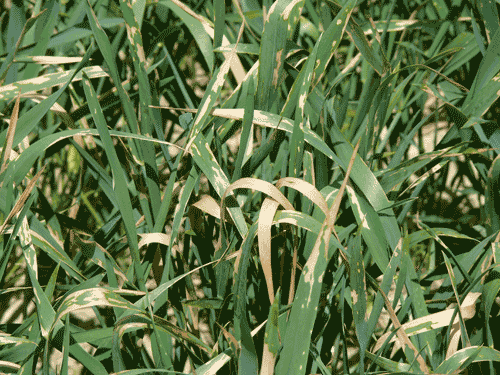Cropside: What’s STRAW worth?
AGRONOMIC INFORMATION FROM ONTARIO'S CROP SPECIALISTS

THERE ARE NOT many wheat acres, and April weather hammered any hopes we had for big straw yields. The crop is SHORT! (Photo 1). All those cold nights not only frosted off leaves, but limited internode extension as well. Frozen leaves make less leaf tissue for straw, less photosynthate for big stems, and no internode extension means short stems. The weather stress resulted in far more surfactant burn (Photo 2) than normal from herbicide and fungicide applications as well, resulting in less straw. Demand is high and supply is low. So what is straw worth?
PHOTO 1: WEATHER CONDITIONS MAKE FOR A SHORT CROP THIS YEAR.

PHOTO 2: SURFACTANT BURN DUE TO WEATHER STRESS

Information on the OMAFRA?website gives a wide range of nutrient values for straw (Agronomy Guide, pg 86, http://www.omafra .gov.on.ca/english/crops/pub811/4variety.htm#toc ). Using “average” values, the calculations shown below give the fertilizer value of straw, not including micronutrients, sulphur or magnesium.
- P/K only: Value ($/tonne) = $/tonne MAP x 0.003 + $/tonne Potash x 0.014
- P/K/N: value in 1 above + $/tonne urea x 0.015. To change above values to cents/pound, divide answer by 22.05 (Map @ $750, Pot @ $650, Urea @ $650 = straw at 1¢/lb N/P/K)
These numbers often surprise growers because of how low they are. However, it does not take into account the value of the organic matter. Removing the straw from three wheat crops will reduce the soil organic matter (OM) by about 0.1%. That doesn’t seem like very much. But 0.1% OM will hold nearly one inch of water. Imagine the value of a one inch rain on July 20, just as corn tassels when it hasn’t rained since June 15. That would be called a “million dollar rain” in the media. Leaving the straw in the field means you have that water in storage already, so the crop acts as if it had that “million dollar rain”.
What is the value of straw this year? It’s a local market. Three or four cents per pound is pretty common, more in some areas. But if you choose to turn that straw into a “cash cow”, do something to put back that organic matter! Deal for manure, plant cover crops, use bio-solids or green bin compost. Cash may be king, but organic matter is the key to your farming future! •

















